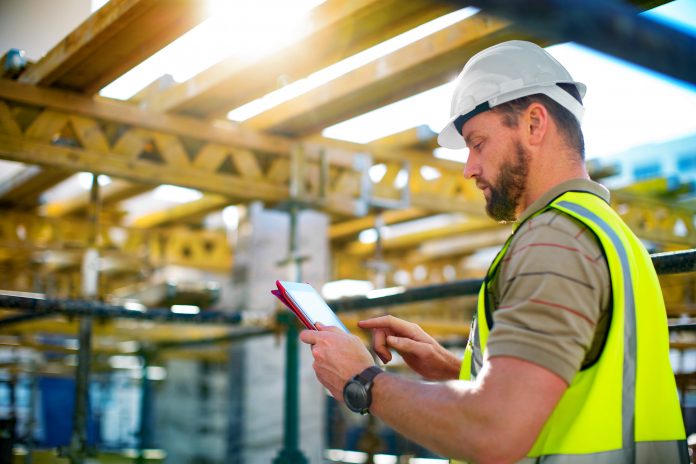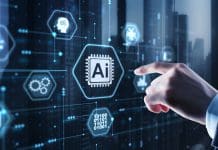Like many industries, engineering and construction is seeing a greater digitisation of the sector that is being driven both externally and internally. At the heart of this change lies a growing interest in using data across built asset projects. Frank Weiss, senior director at Oracle Construction and Engineering explains
Externally, there are new technology solutions entering the market driven by advancements in technology. In addition, there are enhancements to existing solutions enabled by a better understanding of how to use technology to solve challenges that the industry faces. Competitive pressure is also a factor as organisations look to gain an edge and meet the expectations of their clients.
Internally, there is a new generation of workers coming into the industry and bringing with them their own digital expertise and demanding modern tools to do their job. As a result, there is likely to be an increased use of digital tools adopted across built asset projects due to the new digital natives entering the industry. They’ve grown up in a digital world and will expect to have access to such tools professionally.
There is also a movement across the industry towards digital transformation looking for ways to find efficiencies in project processes, create visibility for project participants, and enable better collaboration with the entire supply chain.
So, what does this modernisation look like and what will be involved? For starters, it will be rethinking the way we look at existing methodologies, such as building information modelling (BIM), gaining better data intelligence though common data environments (CDEs) and, importantly, applying emerging technologies such as digital twins.
What is a digital twin?
At a basic level, a digital twin is simply a digital representation (a mirror or replica) of a physical thing (e.g., an asset, a process, a system, etc.). For the built asset industry, digital twins can play a profound role in how owners manage built assets and how consumers interact with–in many cases, live and work in–such structures.
The understanding of digital twins has evolved. Today, the two-way connection between the digital and physical asset is key. The cost of sensor technology has reduced and IoT solutions can be easily deployed so regular objects in a building can now become smart construction objects (SCO), sharing data with the digital twin.
Data is exchanged between the physical asset and the digital twin with right-in-time connections depending on the purpose of the digital twin. If the digital twin’s purpose is to facilitate operations such as the management of fire safety systems, real-time data might be required. If the purpose is to facilitate better planning or resilience, real-time data may not be necessary–the refresh rate of data could be once per week or month.
The physical/digital connection allows more and better insights into the status, performance and other attributes of an asset or component – and a greater ability to intervene at the right time when necessary. Such interventions–recommended actions or changes–are fed back to continually improve the construction and/or operation of the physical asset.
In order to make this process happen, we need both data quality and better context for that data. Systems and platforms must ensure that only valid data is used. The familiar problem of “garbage in, garbage out” cannot be tolerated. Data transformation tools leverage better insights and decisions by using AI, machine learning (ML), or basic data analysis to enable interventions.
The cloud is key to making this possible. Cloud technology can create the needed connections between data and stakeholders across a project – and channel the data between the CDE, BIM and smart device used to receive the information.
With such processes and systems increasingly in use, we’re likely to see the creation of more digital representations (i.e., digital twins) of physical assets that help to continually improve how the assets are developed and used. From our perspective, this is a positive move for the industry.
Such change will help us take the next steps on the road to developing an ecosystem of digital twins. In an ecosystem, the benefits of digital twins can increase exponentially, as cities’ systems work together to learn and improve our built and natural environments.
Moving from any data to quality data
Given the rapid rise of digitisation in the industry, there is already an explosion of data. We need to be able to move away from collecting just any data to focusing on the right data for the situation it is being used for.
Digital twins will depend on a greater focus on data quality. The larger vision is that improved data quality for a digital twin creates more certainty for the recommendations or changes it provides to improve the construction or operation of a built asset.
This approach will play out in terms of how data is utilised across built asset projects. We’ll see modern platforms in the engineering and construction space moving beyond just serving as a data host only to focus on importance of the data it provides.
This is important because the use of digital twins is evolving towards becoming a connected ecosystem. Citizens are driving this change by living the way they want to. According to the United Nations (UN), by 2050, there will be around 9.7 billion people and 68% will live in urban cities compared to 55% today, so our cities need to adapt to us.
Changing demographics and changing lifestyles have placed greater emphasis on making our built and natural environments smarter, sustainable and connected. The important difference is that we must consider all changes in this cyber physical world from a citizen’s or a user’s perspective first. At the heart of it all lies data and a key to the successful use of that data is quality.
Frank Weiss
Senior director of new products, BIM and innovation
Oracle Construction and Engineering

















